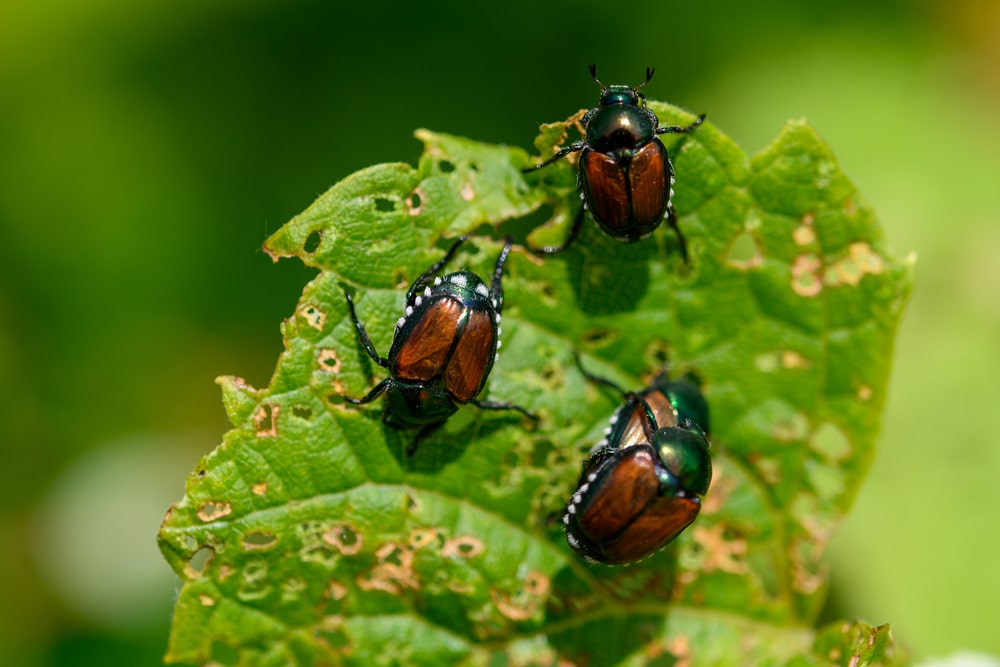And you thought I was going to write about some new plant. NOPE! It is essential to be aware of Japanese Beetles’ presence now. They are here. Customers come into the garden center daily, wanting to know what is eating their plants. Japanese beetles are a serious pest that feeds on the leaves and flowers. On the bright side, that beetle damage to our plants is cosmetic only and will not kill our plants.
You may be wondering why they are called Japanese beetles. It is because they are native to Japan. This beetle was first found in the U. S. in 1916 after being accidentally introduced into New Jersey. Now Japanese beetles are throughout the United States.
Setting a Plan
The best strategy for controlling beetle damage on your beloved plants is through learning the life cycle of the Japanese beetle and then applying control measures at the appropriate times. The three cycles of life are eggs, larvae, and adults. Right now, we are dealing with the adult stage.
ADULT STAGE
The beetles are now flying around and eating our plants. This will go on for about 30 to 45 days. As they fly around, the male and female beetles will mate. The female will then lay her eggs on our turf. This leads to the egg stage.
EGG STAGE
These eggs will then hatch later this summer and grow into larvae.
LARVAE STAGE
The larvae stage is what we commonly refer to as the white grub worm. These white grub worms will eat on our lawn grass roots this fall before going down deep in our soil for the winter.
So, what control measures should we be taking now?
- Set out BEETLE TRAPS – Beetle traps are an easy and effective measure to protect our plants from damage without using chemicals.
- HAND PICK – As gross as this may seem, Japanese beetles do not bite. Just pick them off your plants and put them in a plastic bag to dispose of.
- NEEM OIL SPRAY – Neem Oil spray will kill the beetles. You need to spray Neem oil directly onto the beetle.
One last thing…
Later in September, I suggest putting down some MILKY SPORE. Any eggs in the soil will pupate into the larvae stage, the white grub worm. While this larva is near the top of the soil, the larvae will ingest the milky spore and die, and, at the same time, will help multiply the amount of milky spore in the soil for even more control. Milky Spore is a very environmentally friendly product. Your strategy is to have the Milky Spore kill as many of these grubs in September before they go deep into the soil for the upcoming cold winter months.
Come in to see us. We have everything you need.

